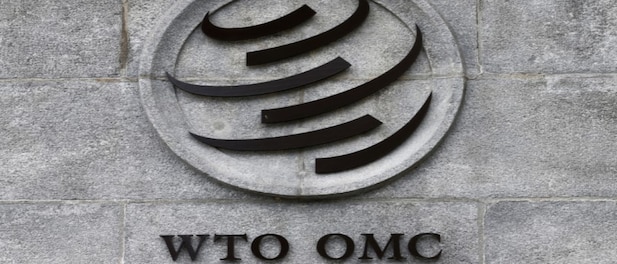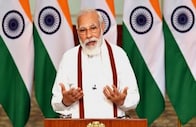India currently has a duty regime in a large number of IT products which are consistent with its ITA commitment -- a fact acknowledged in the Dispute Settlement findings. However there are also a large number of IT products on which tariffs are applicable. Despite the ruling it will be attractive to continue with the tariff protection on such products. However, the country cannot afford to descend into trade chaos.
The wait is over. The WTO Dispute Settlement Body (DSB) has circulated its findings in the cases brought in 2019 alleging violation of India’s commitment under the Information Technology ( IT) agreement . The findings, circulated early this month, were in response to complaints filed by the European Union, Japan and Chinese Taipei in “India — Tariff Treatment on Certain Goods in the Information and Communications Technology Sector” (DS582), “India — Tariff Treatment on Certain Goods” (DS584) and “India — Tariff Treatment on Certain Goods in the Information and Communications Technology Sector” (DS588) respectively.
The three complainants held consultations with India but failed to reach an amicable agreement. Subsequently, a panel was established by the Dispute Settlement Body (DSB) in June 2020. The panel chaired by an Australian arbitrator Paul O'Connor consisted of representatives from Mexico and Chile as the other members.
A common refrain in all the three complaints was that India was applying tariffs on imports of certain Information Technology Agreement (ITA) products in excess of the duty limits as set out in its WTO Schedule. The complainants argued that India had violated the provisions of its commitments, particularly Articles II:1(a) and II:1(b) of the GATT 1994. The provisions of Articles II:1(a) and (b) of the GATT 1994 in effect states that products described in the schedule ‘ shall, on their importation into the territory to which the Schedule relates, and subject to the terms, conditions or qualifications set forth in that Schedule, be exempt from ordinary customs duties in excess of those set forth and provided therein’.
Also Read: Clerical error led to wrong trade tariffs, says India; starts remedial actions to settle WTO dispute
By way of background it may be mentioned that most of the WTO agreements are the result of the 1986–94 Uruguay Round negotiations, signed at the Marrakesh ministerial meeting in April 1994. Negotiations since then have produced additional legal texts such as the Information Technology Agreement (ITA ). The original ITA was reached in 1996, through the Singapore “Ministerial Declaration on Trade in Information Technology Products”.
The ITA covers a large number of technology products, including computers, telecommunication equipment, semiconductors, semiconductor manufacturing and testing equipment, software, scientific instruments, as well as most of the parts and accessories of these products. The ITA requires each participant to, within prescribed timelines, eliminate and bind customs duties at zero for all products specified in the Agreement. India is a signatory to the ITA.
The range of products cited by the three complainants fell under Chapters 84 and 85 of the Indian Customs Tariff. They ranged from static converters for automatic data processing machines and units thereof to telecom apparatus, telephones for cellular networks or for other wireless networks, base stations, machines for the reception, conversion and transmission or regeneration of voice, image or other data, including switching and routing apparatus.
Again, by way of background it may be mentioned that a common system of classifying products globally called the Harmonized System (HS) has been adopted. This system uses code numbers to define products. The HS is updated (transposition) periodically (every four to six years) by the World Customs Organization (WCO) to keep pace with new technology/ products. India’s Customs Tariff also adopts the HS; the WTO Schedule is linked to the HS.
The process of transposition could result in new products being incorporated in the HS Schedule. This is where the dispute has occurred. India’s argument was predicated on the premise that the transposition of the HS2002 to HS2007 by the WTO Secretariat had added some items in the zero tariff category that it felt shouldn’t have been included. It has been contended that a number of products mentioned in the subsequent HS Schedules did not exist when the ITA was signed -and hence are not a part of the ITA commitment. Further India contended that pursuant to Article 48 of the Vienna Convention on the Law of Treaties (Vienna Convention), aspects of India’s WTO Schedule are invalid as a consequence of an error during the transposition of the HS 2002 to the 2007 version.
In other words, India’s contention was that the benefit of exemption need not be extended to such new products. Smartphones is a case in point. Hence India justified the imposition of custom’s tariff’s ranging from 7.5 percent to 20 percent on some IT products. The 3 member panel however was not convinced. It held that the tariff treatment of products under contention were inconsistent with Article II:1(b);that they were ‘subject to ordinary customs duties in excess of those set forth and provided in India’s WTO Schedule.
India can and will appeal against these findings. There is a certain delicious irony here-- USA which is also a party to the contention raised by EU, has ensured that the WTO’s appellate body is non-functional. Since 2019 they have blocked appointments; the term of the last member having expired in November 2020. So it is unlikely the matter will be heard anytime soon.
India currently has a duty regime in a large number of IT products which are consistent with its ITA commitment -- a fact acknowledged in the Dispute Settlement findings. However there are also a large number of IT products on which tariffs are applicable. Despite the ruling it will be attractive to continue with the tariff protection on such products. Our Atma Nirbharata doctrine can domestically justify such imposition-more so since it is this protection ( and PLI ) which is prompting foreign investments in the sector. Our exports in this sector have performed ‘smartly’ --smartphones alone worth more than $10 billion are estimated to have been exported in 2022-23.
There is unconfirmed news about EU contemplating retaliatory tariffs against Indian exports. The world can ill afford to descend to trade chaos. In the longer run though it would be prudent and advisable for all to adhere to commitments made under international treaties.
—The author is chairman (retired) of the Central Board of Indirect Taxes & Customs. The views expressed herein are personal.
Read his previous articles here
(Edited by : C H Unnikrishnan)
First Published: Apr 25, 2023 8:15 AM IST
Check out our in-depth Market Coverage, Business News & get real-time Stock Market Updates on CNBC-TV18. Also, Watch our channels CNBC-TV18, CNBC Awaaz and CNBC Bajar Live on-the-go!







